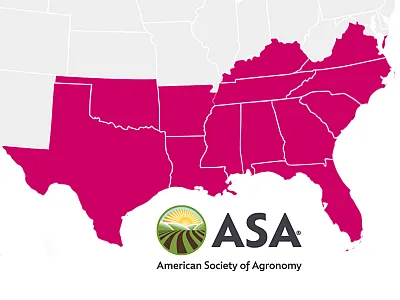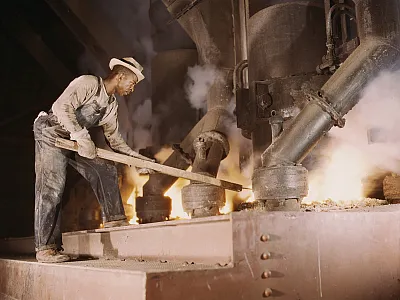Managing Alfalfa Stem Nematode in the West
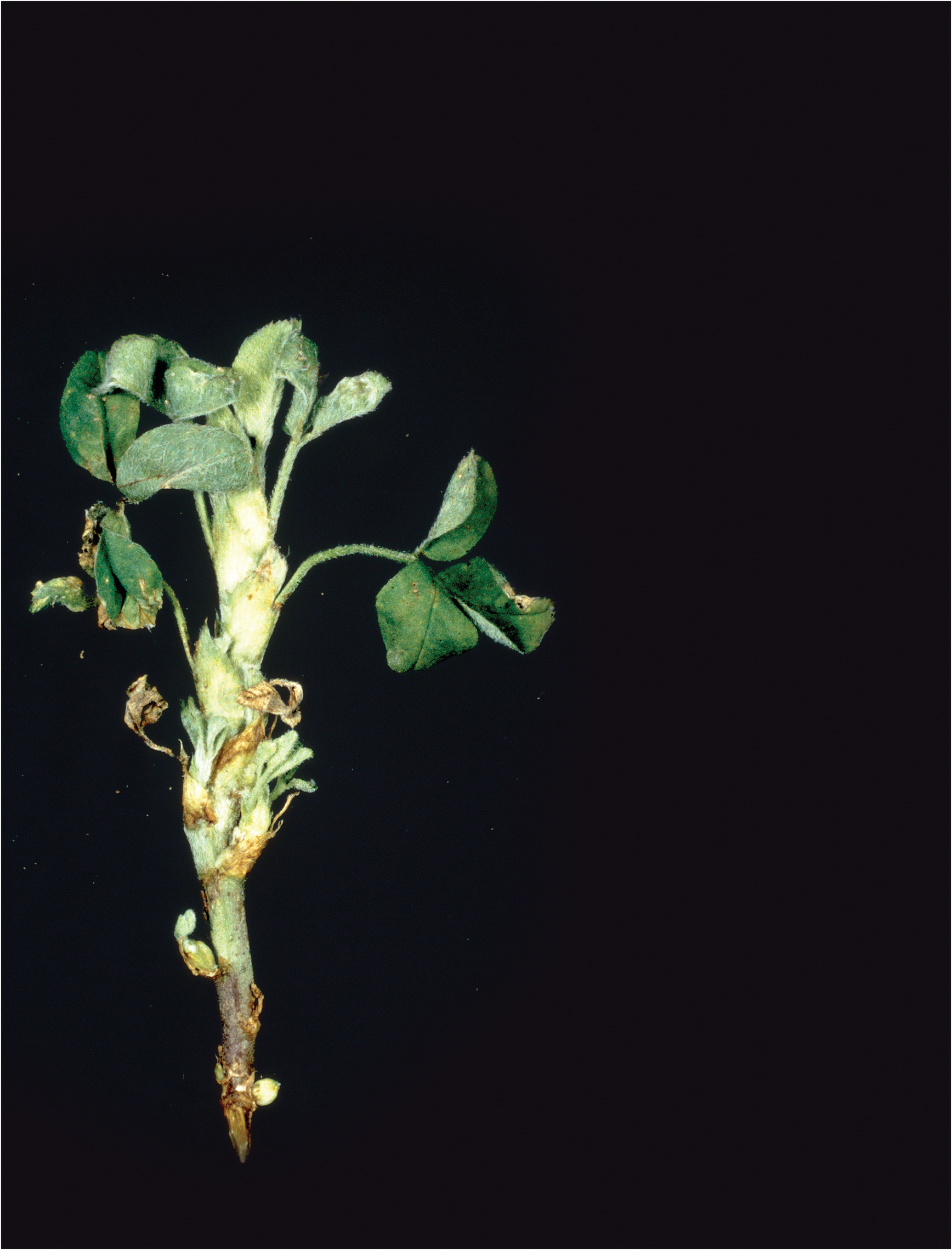

For western producers and crop consultants, stem nematode is one of the top pests in terms of potential alfalfa yield, quality, and stand reductions. With no economically viable or registered nematicides, management hinges on resistant varieties, planting certified seed, crop rotation, equipment sanitation, and where possible, reducing water runoff from potentially infested fields. Earn 1 CEU in Integrated Pest Management by reading this article and taking the quiz.
For western producers and crop consultants, stem nematode is one of the top pests in terms of potential alfalfa yield, quality, and stand reductions. With no economically viable or registered nematicides, management hinges on resistant varieties, planting certified seed, crop rotation, equipment sanitation, and where possible, reducing water runoff from potentially infested fields.
“We’ve had perennial problems with stem nematode,” says Dr. Dan Putnam, University of California (UC) Cooperative Extension alfalfa and forage specialist. “A lot of times, it’s a question of the confluence of environmental conditions like moisture and temperature. Water also moves from infested fields to new fields. We’ve seen whole fields being completely devastated with the pest. But in other cases, even on a farm with 2,000 to 3,000 acres of alfalfa, we’ll see only a few fields infected.”
In California, he says stem nematodes are typically a problem in the northern San Joaquin and Sacramento valleys as well as the Intermountain Region in the northeastern part of the state.
Serious infestations of stem nematode caught the attention of many California researchers and producers during the winter of 2009 and again in 2010 in the Sacramento and northern San Joaquin valleys.
At the time, some researchers suspected that increased winter time temperatures favored nematode reproduction. In addition, some pointed to alfalfa growers moving away from organophosphate and carbamate insecticides, which can suppress stem nematodes. In their place, growers used pyrethroids, which are ineffective against the pest. It also could have been a combination of factors, they say.
“It used to be we were really cold and foggy and stem nematodes were dormant. With winters getting milder overall in our area, the nematodes are able to reproduce and infest alfalfa earlier when alfalfa is just breaking dormancy, growing slowly, and is most susceptible to injury,” says Rachael Long, a UC Cooperative Extension farm adviser for Yolo, Sacramento, and Solano counties.
In the past few years, she says stem nematodes haven’t been as problematic in the area she serves. While Long doesn’t know the root cause, she suspects the state’s four‐year‐old drought may have reduced early‐season wet conditions that allowed stem nematodes to move from the soil into the crop.
She says she also hopes growers have listened to the repeated messages from consultants and nematologists about planting stem‐nematode‐resistant varieties.
“I think temperatures and weather are part of it, but I’m wondering about people paying more attention and choosing varieties that are just more resistant,” says Long, who has worked in area field crops for 32 years.
Despite near‐historic rains this winter in the Sacramento Valley, she says she hasn’t seen as many infestations as usual.
“I think it was the colder winter,” Long says.
Dr. Claudia Nischwitz, a Utah State University (USU) associate professor and Extension plant pathologist, has only received a few suspected stem nematode samples each of the past few years to identify. She says she doesn’t know if that means pest populations are lower, county agents are identifying them at the local level, growers are planting resistant varieties, or all of the above.

“It used to be we were really cold and foggy and stem nematodes were dormant. With winters getting milder overall in our area, the nematodes are able to reproduce and infest alfalfa earlier when alfalfa is just breaking dormancy, growing slowly, and is most susceptible to injury.”
Stem Nematode 101
Unlike many other nematode species that feed on plant roots, alfalfa stem nematode (Ditylenchus dipsaci) infests the aboveground portion of plants, including buds, stems, crowns, and seeds. If populations are high enough, they can cause serious yield, forage quality, and stand losses to established as well as seedling fields.
Stem nematodes are crop specific and can reproduce on alfalfa and survive on sainfoin, a legume forage. As with other plant‐parasitic nematodes, stem nematodes use a hollow needle‐shaped stylet to puncture plant tissue to feed.
When free moisture is present on stems and leaves, infective juveniles move up the outside of plants and enter through the plants’ stomates. They also can colonize seedlings as they germinate.
As stem nematodes feed, they produce enzymes and plant hormones that cause symptoms including yellowish, shortened stems; shortened internodes; and swollen buds that don’t elongate. Leaf distortion and crinkling between veins also may be observed. A telltale symptom is patches of stunted plants with twisted and deformed leaves.
“White flagging” from lack of chlorophyll due to nematode feeding may occur on a small number of leaf and stem parts, but the symptoms could also be due to other causes. White flagging is more prevalent on regrowth following the first cutting.
As the infestation progresses, stems and crowns may become blackened and spongy, and they may become brittle and break off. The number of stems per crown also is gradually reduced, resulting in crown dieback.
In addition, stem nematode feeding in the crown may produce entry wounds for other pathogens, such as Stagnospera, Fusarium, or Phytophthora, and the stand may never recover. Eventually, infested plants may die, leaving blank spots in fields that may be invaded by weeds.
Within the host plant, juveniles molt a fourth time, becoming adults. Females have a reproductive range of 41–86 °F, and a single female—after mating with a male—can produce 200–500 eggs during its reproductive life. From egg to adult, a stem nematode can complete an entire life cycle in 19 and 23 days under optimum conditions of 59–70 °F.
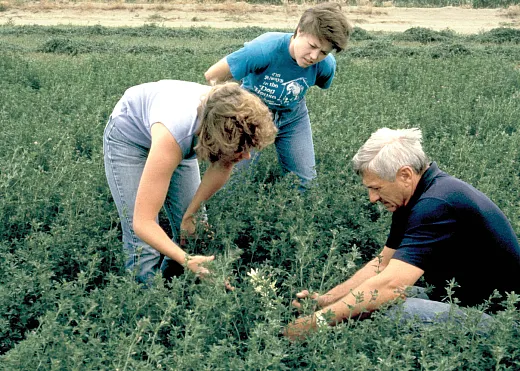
During favorable conditions that typically occur in early spring or in mild winters, nematodes can reproduce and spread rapidly, Putnam says. This coincides with when the alfalfa is growing slowly, and the nematodes are able to overwhelm the plants.
As a result, yield reduction is most severe with the first and sometimes second cuttings, depending on the season. As spring temperatures warm, the plant typically can outgrow the nematode damage.
“In a badly damaged alfalfa field, we’ll completely lose the first cutting to stem nematode,” Putnam says. “As the conditions improve during the spring, the crop will mostly recover and yield normally. Alfalfa is a resilient crop. However, under severe infestations, dramatic stand loss can occur.”
When plants can no longer support increasing nematode populations or the plants die, the parasites escape into the soil where they likely can remain viable for up to two years under normal rainfall or irrigation.
Because of their ability to withstand desiccation, juvenile‐stage stem nematodes can survive under dry conditions in hay, seed, and soil for several years.
Nematicide Field Trial
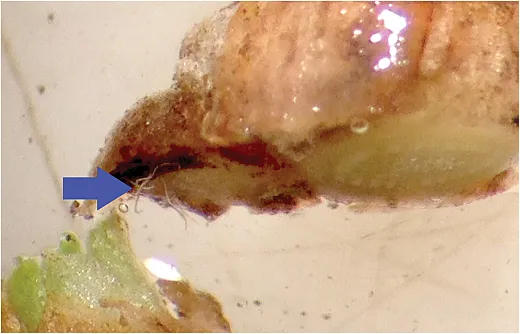
Along with Putnam and UC‐Davis nematologist Dr. Becky Westerdahl, Long conducted a trial in 2009 that examined the efficacy of six nematicides on stem nematodes in a Yolo County infested field. The treatments were DiTera (Myrothecium verrucaria strain AARC‐0255), Cobalt (chlorpyrifos + pyrethroid), Movento (spirotetramat), Spinetoram (spinosad), Agri‐Mek (abamectin), and Vydate (oxamyl). All were applied at recommended field rates during late winter. Of those, only Cobalt was registered for use on alfalfa at the time, and California has since banned one of its active ingredients, chlorpyrifos.
Three products significantly reduced the number of nematodes per liter of soil compared with the untreated check five weeks after treatment, Long says. In both the Yolo County trial and a similar one in nearby Colusa County, no treatment significantly reduced nematodes in the plants or significantly increased alfalfa yields. Fall treatments also did not show efficacy against stem nematodes.
Stem Nematode Sampling
The first step in managing stem nematode is verifying it is indeed the cause of stand decline. Certified Crop Advisers or Extension specialists can do this using a dissecting scope, Long says. With scissors, cut several symptomatic stems from different plants. After further cutting them into about half‐inch pieces, place them in a Petri dish at room temperature with enough water to submerge the stems. If stem nematodes are present, she says they’ll come pouring out within 15 minutes. If the alfalfa variety is pubescent, Long says, plant hairs may initially be confused with stem nematodes, but wiggling by the nematodes will set them apart.
Dr. Mylen Bohle, Oregon State University associate professor emeritus and Extension agronomist for central and eastern Oregon, recommends documenting “the good, the bad, or the ugly of how one’s management of the field turned out.” He says this could prepare the grower for potential yield hits for the first cutting during the stand’s life.
“In the past in central Oregon, I have seen fields that had high resistant varieties for stem nematode that the resistance broke down because of the overwhelming population of nematodes,” he says.
In stem nematode‐infested areas, Bohle says collecting soil samples before planting a new alfalfa field helps identify nematode species as well as population levels.
“In fact, soil and plants should be tested before deciding which variety might be the best one to plant back in the field after two years of rotating out,” he says.
Several universities and private diagnostic labs offer nematode soil testing.
“Soil and plants should be tested before deciding which variety might be the best one to plant back in the field after two years of rotating out.’’
Resistant Varieties
Planting highly resistant stem nematode alfalfa varieties in areas where stem nematodes are problematic is one of the main management recommendations from consultants and Extension experts. Each year, the National Alfalfa & Forage Alliance compiles a list of varieties based on pest resistance, winter survival, and fall dormancy ratings. The information is obtained from the Association of Official Seed Certifying Agencies and the National Alfalfa Variety Review Board report. The 2023 variety ratings can be found at https://alfalfa.org/varietyLeaflet.php. Even with those highly resistant—or HR—varieties, Putnam points out that 51% of the plants are required to show high resistance.
“It’s calculated based on plants in the variety population, which means that 49% of the plants are susceptible,” he says. “While we would like to have a higher number of resistant plants (e.g., >80%), alfalfa can sustain some stand damage and still have a good population for high yields.”
Crop Rotation
Rotating to non‐host crops, such as tomatoes, small grains, beans, or corn for two to four years is another pillar of stem nematode management, Putnam says. Not only does it help reduce stem nematode numbers, but it also aids with other pest pressures.
“Crop rotation is always the first choice before planting alfalfa and after planting alfalfa,” he says. “Some of our growers want to plant back‐to‐back alfalfa, and I try to discourage that because of issues with stem nematode and other pathogens. In some cases, they’ve come back in and seeded alfalfa after alfalfa. In this case, you’re going to see all of the problems you had in the previous crops whether it’s disease issues or other problems.”
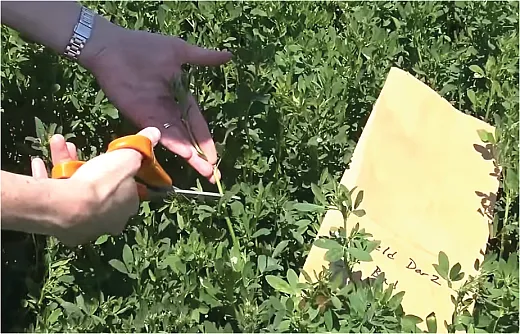
“Putting in corn or a small‐grain crop instead is probably more desirable. Some of these nematodes will go to some of the other crops, so you have to pay attention.”
Also known as bulb and stem nematode, the pest can infest garlic and onions as well, so those aren’t desirable rotational crops, he says.
In heavily infested fields, longer rotational periods without alfalfa are better. But Putnam says he also understands market forces and how they may prompt growers to reduce periods between alfalfa crops.
Utah State University’s Nischwitz agrees. “Some farmers go back early because it’s their main income, and it depends on how dense your population is.”
She was involved in a 2016 study that modeled durations of stem nematode rotations and the pest’s reemergence. The work, led by Scott Jordan with the USU Department of Mathematics and Statistics, was part of his master’s thesis. Jordan is currently a lecturer in the USU Eastern Department of Mathematics and Statistics.
The researchers included assumptions of rotating out of alfalfa once 50% stand infestation occurred and an alfalfa stand life of five to six years. Based on those, the model approximated rotations with non‐host crops of two to four years.
In rotational crops, Putnam also recommends controlling volunteer alfalfa plants. Overseeding older alfalfa stands with grasses is not a rotation since alfalfa is still in the field and acts as a host.
“As long as you have alfalfa out there as a host, you’ll continue to have these pests and diseases infesting the field,” he says.
“Some of our growers want to plant back-to-back alfalfa, and I try to discourage that because of issues with stem nematode and other pathogens.”
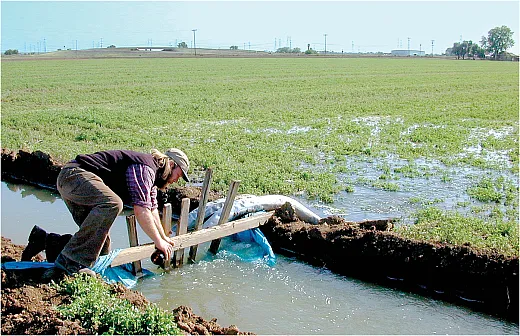
Prevention, Including Sanitation
Preventing the introduction of alfalfa stem nematode is another best management practice, and that includes use of certified clean, nematode‐free seed, Nischwitz says. Stem nematode is not widely seedborne and can also survive on chaff. Certified seed, on the other hand, is well cleaned to remove alfalfa debris and stem nematodes and then tested for the presence of the pest before seed sales.
Putnam recommends avoiding movement of contaminated farm machinery from an infested field to a clean one.
“Pay attention to equipment sanitation,” he says. “Growers can’t do much about soil stem nematode populations or irrigation water. However, they can do something about their equipment.”
Long says she worked closely with one alfalfa grower who had spread the nematode from an infested field to a clean one with his swather. The symptoms were most severe where the machine entered the field, and they diminished within about 100 yards from the entryway.
To prevent this, the best approach is to use a pressure washer or high‐pressure blower to remove clinging alfalfa and mud or dirt after harvesting an infested field and before moving onto the next. That may not always be feasible. An alternative, Long says, is to cut a field of grass in between to help clean out the alfalfa from the equipment. The grower who had spread stem nematodes began harvesting a grass crop after cutting his infested alfalfa field, and he has not expanded the pest since.
Putnam says he’s also seen the influence of water in spreading stem nematodes where a basin will be heavily infested, but the berms, which are above the water, are not. Preventing water movement from an infested field onto a clean one isn’t always feasible, but he says growers can stop reusing tailwater in an infested field for healthy fields.
In addition, Putnam warns about bringing in livestock from infested fields that may have nematodes hitchhiking on mud or manure on the hooves.
Self-Study CEU Quiz
Earn 1 CEU in Integrated Pest Management by taking the quiz. For your convenience, the quiz is printed below. The CEU can be purchased individually, or you can access as part of your Online Classroom Subscription.
- When is alfalfa most susceptible to injury from stem nematodes?
- Early spring.
- Late spring.
- Mid-summer.
- Pre-harvest.
- In parts of California, problems with stem nematodes have abated in the past four years. What is a possible explanation, according to an expert quoted in the article?
- Drought.
- Increased use of resistant varieties.
- Cold winters.
- All of the above.
- Unlike many other nematode species that feed only on plant roots, stem nematodes also dine aboveground.
- True.
- False.
- Signs that a plant has been infected by stem nematodes include all of the following EXCEPT
- Yellowish, shortened stems.
- Severe wilting.
- Leaf distortion.
- Crinkling between veins.
- Assuming good conditions, how long does a stem nematode live?
- About two weeks.
- About three weeks.
- About four weeks.
- About five weeks.
- Stem nematodes use their stylets to bore into plants, creating openings that are subsequently exploited by what other pathogen?
- Stagnospera.
- Fusarium.
- Phytophthora.
- All of the above.
- Although alfalfa stands can suffer severe nematode damage early in the season, they typically recover more and more as the season progresses.
- True.
- False.
- Under favorable conditions, how long can nematodes survive in the soil?
- Up to a month.
- Up to six months.
- Up to a year.
- Up to two years.
- The article describes a simple in-field test to confirm whether nematodes are in an alfalfa field. How long does it take to run this test?
- 15 minutes.
- 30 minutes.
- 1 hour.
- 1 day.
- Rotating other crops for a few years between alfalfa plantings helps keep stem nematode populations in check. Which of the following is NOT a good choice for crop rotation?
- Corn.
- Onions.
- Tomatoes.
- Beans.
Text © . The authors. CC BY-NC-ND 4.0. Except where otherwise noted, images are subject to copyright. Any reuse without express permission from the copyright owner is prohibited.




